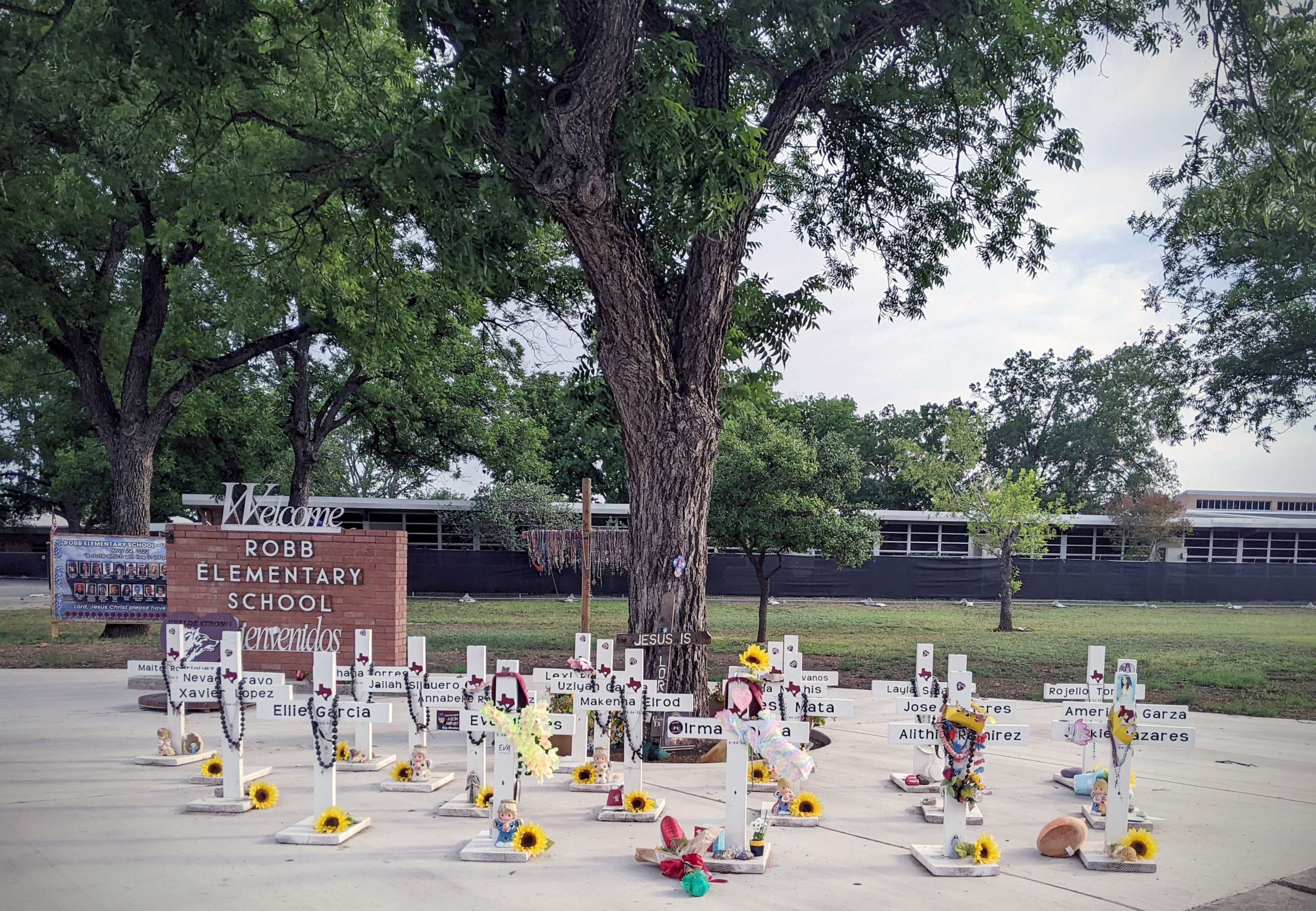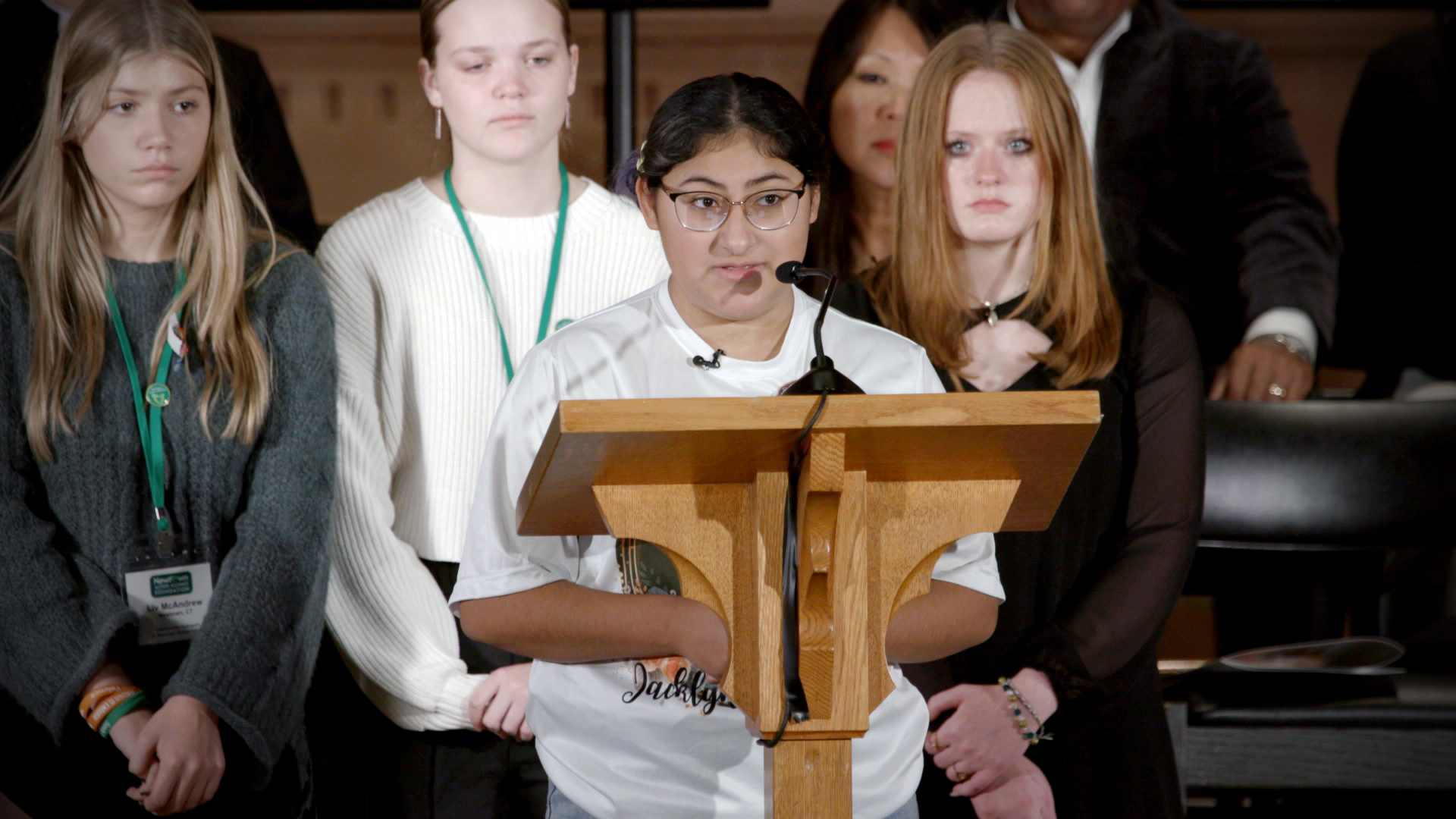A year after Uvalde school shooting, a community's quest to remember and rebuild
Kimberly Rubio started running three years ago, a daily routine inspired by her fitness-enthusiast mother.
Now, she runs to process the pain, she says, that lingers nearly a year after a tragedy that killed one of her own daughters unfolded in her hometown of Uvalde, Texas, on May 24, 2022.
"It's the only time I really let myself think about what happened that day," Kimberly Rubio told "20/20." "If there was somewhere I could go to escape this pain, I'd have already booked my flight."

Families across Uvalde shared their intimate and unimaginable journeys throughout the past year, for a special "20/20" report, documenting the long-term impacts a community faces after a mass shooting. The special, part of a yearlong, on-the-ground reporting effort, premieres Friday, May 19, at 9 p.m. ET on ABC, and will stream the next day on Hulu.

Kimberly Rubio and her husband Felix Rubio are parents of Alexandria "Lexi" Rubio, one of the 21 victims killed in the Robb Elementary school shooting.
"I shouldn't be here, describing my daughter. She should've made her own imprint on this world," Kimberly Rubio said. "I wasn't done raising Lexi."

Felix said he visits his daughter's gravesite almost daily to speak with his daughter and to place a kiss on her tombstone.
"I was supposed to pick her up from school. We all know that I didn't," Felix Rubio said. "I guess in a way, coming out every day is me hoping I'll pick her up."

Although it was Lexi's final home, they decided it was best to move into a new house across town.
The couple sat across from each other in August 2022 on the floor of their living room to pack souvenirs collected from all their children, including a crayon drawing by Lexi that Kimberly would later get tattooed on her arm.

"Once we had everything moved out and it was just me and Kim there," Felix Rubio said, "I called out for Lexi, and yelled, 'It's time to go, Lexi.' That was hard."
Gloria and Javier Cazares, parents of 9-year-old Jacklyn Cazares, said their daughter and the events of May 24 are constantly on their minds.
"I know she knows how much we miss her," Gloria Cazares said. "How much I yearn to give her that one hug."

Jazmin Cazares, Jackie's sister, channeled her grief into activism in various ways throughout the year.
"I'm always fighting," Jazmin Cazares said. "But it's at home when it's the hardest. You don't see it when I'm ugly crying in my little sister's room."

Javier and Jazmin Cazares showed "20/20" Jackie's bedroom, a place where the family finds comfort. Photos and tributes to Jackie cover the walls inside. Some items, like jewelry on the dresser and colorful lights hung on the ceiling, remain exactly in the place where Jackie left them.
"I come in here morning and at night and talk to her like if she was here," Javier Cazares said. "That's where I used to hear her giggle and talk."

For teachers and students present at Robb Elementary that day, surviving has come with a wave of physical and emotional consequences.
Arnie Reyes was an educator for nearly 20 years and a fourth-grade teacher last school year. He was in his classroom with 11 students at Robb Elementary and was the only person to survive from that room.
Reyes' classroom was connected via interior double doors to the classroom of teachers Irma Garcia and Eva Mireles, who were shot and killed alongside eight of their students.
"As an educator, you never think about losing one student," Arnie Reyes said. "But to lose 11 at one single time, and then to lose your co-workers, and then other little kids that were in that class that you knew - it's a lot at once."

Reyes, who suffered gunshot injuries to his arm and back, cited the struggles "not being a pill person to becoming one," where medication and health checkups were his everyday routine.
Although Reyes "would love to be in a classroom one day again," he decided not to return to teaching to focus on his rehabilitation at home, often from a new armchair gifted to him by his dad after returning from a month in the hospital.
"Everything just stopped," Reyes recalled. "It had gotten to that point where I didn't want to go out … After being home for so long, you try to go out into the community and try to do normal things as much as you can do normally … and then it was kind of difficult because they bring everything back to you."
Reyes recognized this uneasiness is not surfaced intentionally by others when in public, but he hoped people now recognize it's one of the difficulties survivors like him face.
"I want them to always remember the 21 [victims]," Reyes said when asked what he wants audiences to learn after watching the "20/20" special. "Of course, I don't think that they'll ever forget. But I think they also need to remember the survivors. A lot of the focus has been on the 21, and I don't want to take away from that, but a lot of the survivors, we still have to live with the pain, the suffering."

Parents of children who were just doors away from where the shooting unfolded said they are seeing how their families will never be the same.
Daniel Garza was 9 years old and in a classroom on May 24 where his teacher was injured but survived after being shot by a stray bullet that’s believed to have gone through walls.
Daniel's mother, Briana Ruiz, said her son was "always laughing" and a "funny, laid-back" kid before the shooting.
"Today, he's still funny, but he worries a lot now," Briana Ruiz said. "Many people don't see when he has his anxiety attacks, when his PTSD is up ... I never imagined that there would be so many obstacles and repercussions."

In the weeks after the shooting, Daniel said he began waking up at night and struggled to sleep full nights. Briana Ruiz said she's learned it's important for her family to participate in therapy sessions and openly talk with each other, so the family developed a routine of attending counseling sessions available in Uvalde.
"It's helped me to speak more to my therapist," Daniel Garza said. "She gave me some markers and a notebook, so I could write what's making me wake up in the middle of the night."
The start of a new school year brought new concerns over safety for kids returning to classrooms. With Robb Elementary closed, students staying in Uvalde moved to one of three other district elementary schools. Some students moved to private schooling in Uvalde or virtual learning options from home.
Daniel Garza chose to begin his fifth-grade year at an elementary school in a new district, close to where his mother taught preschool in the neighboring city of Sabinal. He also said he felt safer at Sabinal Elementary because the buildings have secured doors and teachers are allowed to carry weapons in the school.

As the sun set during a fall weeknight at a community field in Uvalde, Daniel joined his young teammates for his youth football practice. The new season marked the first time he played tackle football.
"I chose to get back on the field because I had a lot of anger built in me," Daniel said. "I think it did help me with some of my anger … All that support, it makes me happy."

"Daniel is starting to make some progress. Keeping him busy and him starting to see a different side of the healing is starting to help him," Briana Ruiz said.
Other former Robb Elementary students like Caitlyne Gonzales are experiencing the toll May 24 has taken on them. She was in a classroom across the hall from Reyes.
Starting the night of the shooting, Caitlyne asked her mom, Gladys Gonzales, to sleep alongside her at night because she didn't feel safe in the dark or by herself.

"Once the evening starts to roll around, you can start seeing how the anxiety starts building up. She needs constant reassurance," Gladys Gonzales said.
Caitlyne's parents discussed with "20/20" how they have learned to navigate the PTSD they say she experiences. Caitlyne often has her noise-canceling headphones nearby because of the loud noises that tend to trigger her anxiety.
The family has learned to communicate before completing some routine tasks, like when a bag of ice cubes all stuck together are pulled from the freezer.
"When my dad tells me that he's going to break ice, he'll tell me when to go to another room," Caitlyne said.
"This PTSD manifests in different ways," Gladys Gonzales said. "In her, we see the headaches, the abdominal pains."
Caitlyne said working alongside her therapist has helped her get to a place to try sleeping again on her own and had been doing so for about three weeks, at the time "20/20" asked her in March 2023 about her sleeping habits.
Though Gladys Gonzales said she feels "the future is looking bright" for Caitlyne, her family focused on "navigating each day as it passes."
Caitlyne routinely is shuttled after school across Uvalde by her parents for a slew of activities like girl scouts, karate and guitar.
Those extracurriculars are in addition to her weekly therapy appointments, a roughly 90-minute one-way commute to San Antonio.
"Our main objective was to keep her mind off of the shooting," Caitlyne's father Nef Gonzales said.

Caitlyne, who was 10 years old at the time of the shooting, told "20/20" she is sharing her experience, "so another kid won't go through what me and my friends went through."
During her run, Kimberly Rubio will sometimes pause by her daughter Lexi's image painted on a brick building in downtown Uvalde. It's one in a series of murals created by Texas artists to honor the lives lost.

The murals are a place Kimberly Rubio said she and other mothers like to visit because they preserved some joys the victims left behind, filled with memories that balance with the pain, and motivation to keep pushing forward.
"It's very easy to want to push all the bad things in the world aside," Kimberly Rubio said, "but if we forget, this will just keep happening again and again."
ABC News' Ismael Estrada, Andrew Fredericks, Denise Martinez-Ramundo, Tomas Navia, Elissa Stohler, Megan Hundahl Streete and MaryEllen Schwisow contributed to this report




